The problem
What is the problem? There are four main problems that people face when they need to overcome the loss of a belonging.
1. Lack of trust in the community. We don’t know who we can trust.
2. A safe place to ask for help. There are no lost and found offices everywhere.
3. Sometimes there is the intention to help, but it is so hard to reach people
4. There is no feeling of collaboration and help.
Context research
Urban Areas: High-density cities experience more frequent loss of items due to crowded environments.
• Public Transportation: 25%
• Events/Public Gatherings: 20%
• Parks and Recreation Areas: 15%
• Retail Stores and Shopping Malls: 12%
• Airports and Hotels: 10%
• Restaurants and Cafes: 8%
• Schools and Universities: 5%
• Fitness Centers: 5%
Trust Issues: Hesitation to trust strangers with lost items is common.
Community spirit: The U.S. has a strong culture of volunteering and community support, which is beneficial for a lost-and-found app.
Privacy concerns: Users are concerned about sharing location or personal information; strong privacy controls are crucial.
Causes of loss
Distraction
40%
Crowded Spaces: 30%
Inadequate Storage: 15%
Rush: 10%
70%

of U.S. adults use social media
85%

of U.S. adults own a smartphone

Approximately 67% of U.S. households own a pet, and 15% of pet owners report that their pets have gone missing at least once.

7%
Lose their phone annually.
6%
Lose their keys every year.
10 millions
Americans report losing a wallet or purse annually.
30%
of lost items in public places are not reported.
Age group
Young Adults (18-34 years old)are most likely to lose items (50%), due to social activity.
Elderly Adults (35-54 years old): 30% of reported lost items are often related to work or travel.
Life style
High Activity Levels: Individuals with active lifestyles, including frequent travel and social activities, are more likely to losing items.
Economic status:
High income
Community Engagement:
Interest in community-driven solutions and collaborative platforms.
Tech Adoption:
High usage of smartphones and social media platforms
Target research
Empathy map
What they think and feel?
What do they see?
What they hear?
What do they say and do?
Efforts
What do they say and do?
Primary Users:
18-34 years old.
Why: This group is highly active, making them more prone to losing items.
Tech-Savvy: Comfortable using apps and social media platforms.
High Engagement: Likely to engage with a social app.
Secondary Users:
(35-54 years old):
Why: Often involved in work-related activities and travel, increasing their likelihood of losing items.
Value Convenience:
Appreciate practical solutions that simplify their lives, such as an app that facilitates lost and found.
Pet Owners:
Why: Approximately 67% of U.S. households own pets, and about 15% of pet owners report losing their pets at least once.
High Emotional Investment: Pet owners are likely to use an app to recover lost pets and may engage with features related to pet recovery.
Note
Information and data obtained from online and digital sources, as well as from surveys and interviews conducted
Market research
Jobs to be done
Main JTBD
Recover
Lost
Items
Help users easily recover items they have lost by connecting them with the right people who can return the items.
Related Needs: Ease the process of reporting and finding lost items, ensuring trust and privacy.
Return
Found
Items
Allow users who find items to return them to their rightful owners in a secure and effective manner.
Related Needs: Offer a reliable system for identifying and contacting the owners, and facilitate communication between finders and owners.
Other JTBD
Foster Trust and Security I Encourage Community Collaboration I Enhance Visibility and Engagement I Enhance Visibility
Let the creativity fly
Crazy 8
I executed the ‘Crazy Eight’ strategy to stimulate my creativity and find the best possible solution to solve the problem.
Story board
Customer journey map
User flow
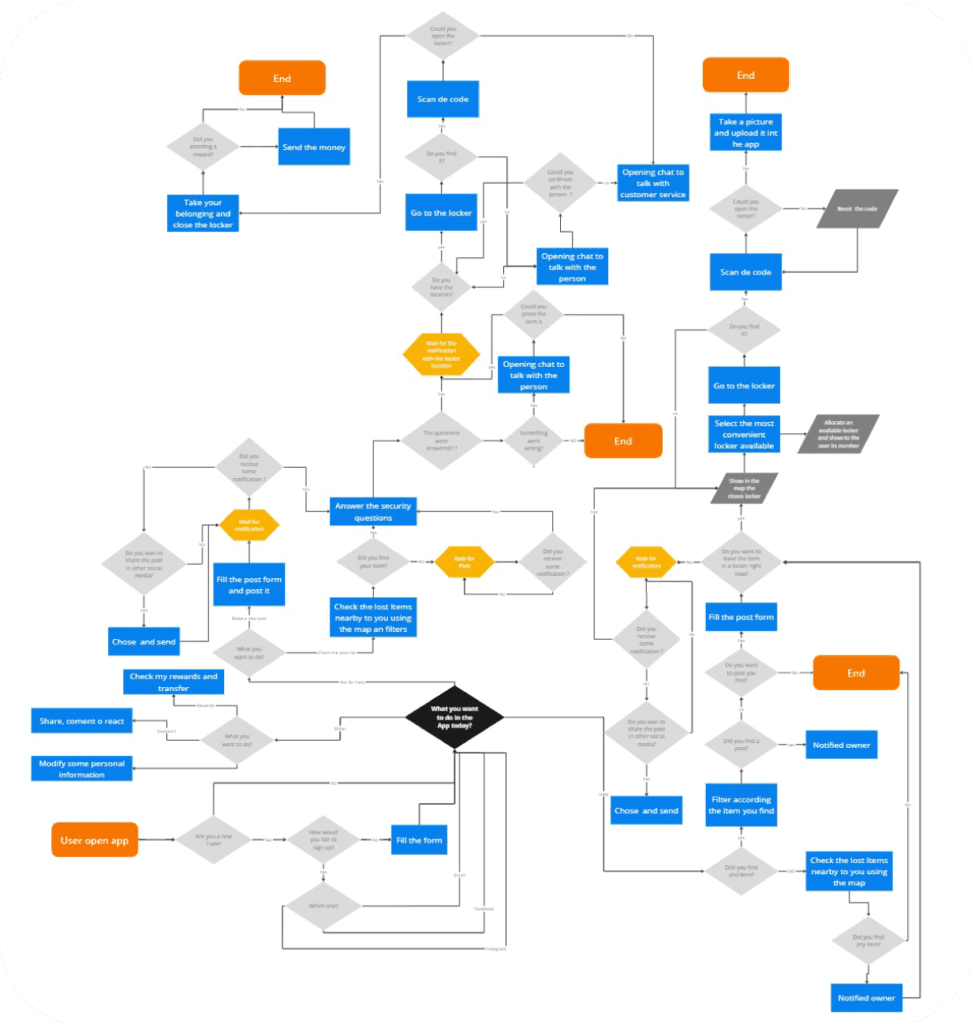
Architecture information
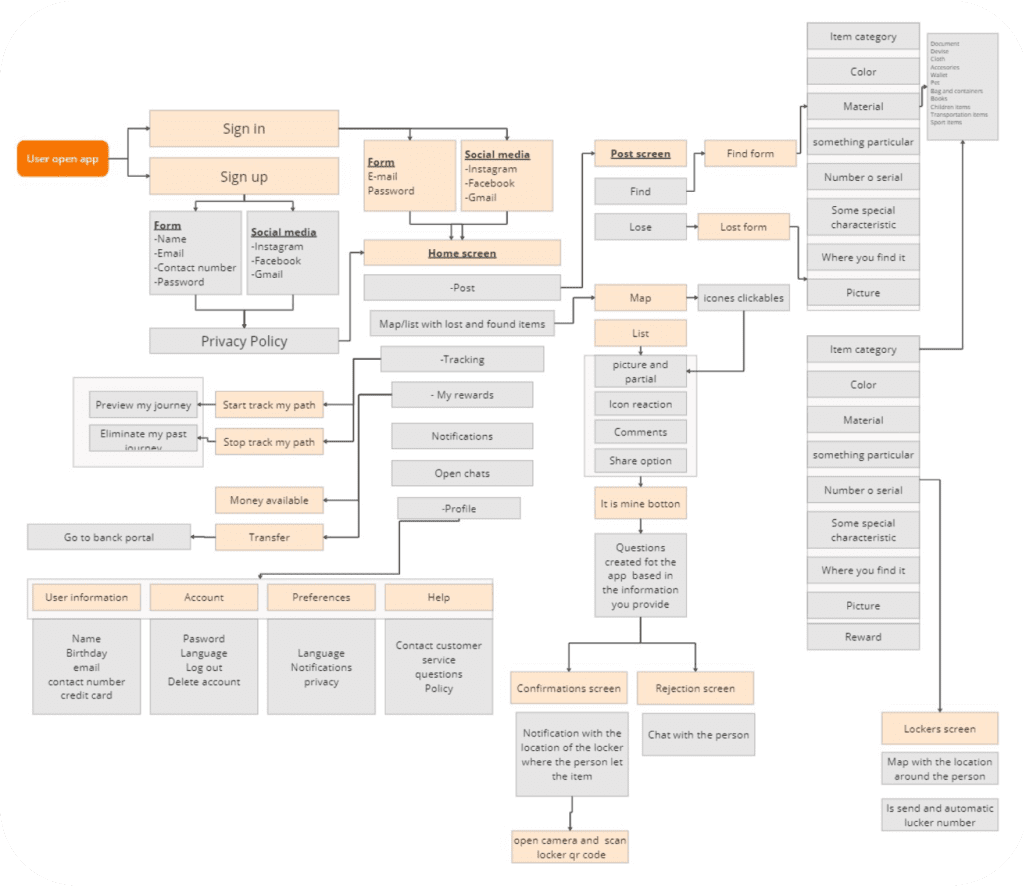
Sketching
wireframes
Prototyping
Low-Fi
After reviewing the user preferences, sketches, and the AI, I finalized the Lo-Fi digital wireframes that contemplated all the screens and their functionality. One of the biggest challenges we faced, was realizing that I needed to add more features than originally planned to give the users a smoother experience within the app.

Goal
Test the ease of navigation.
Test its intuitiveness.
Test its features.
Test understandability.
Participants
Students and employees between 25-30 years old.
Methodology
Online moderate usability test.
Tasks
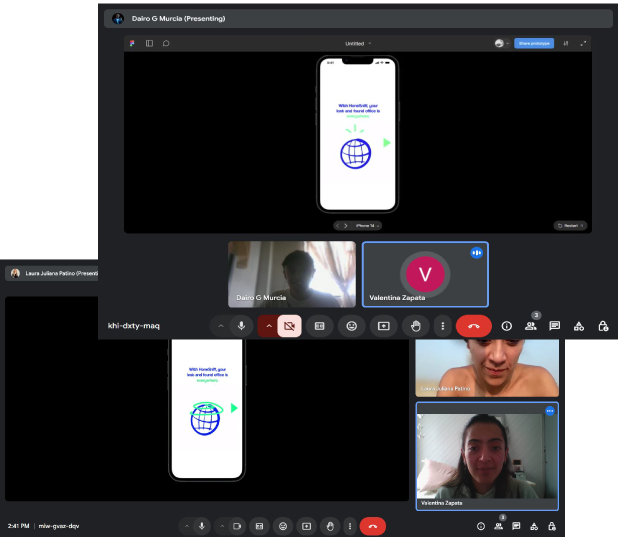
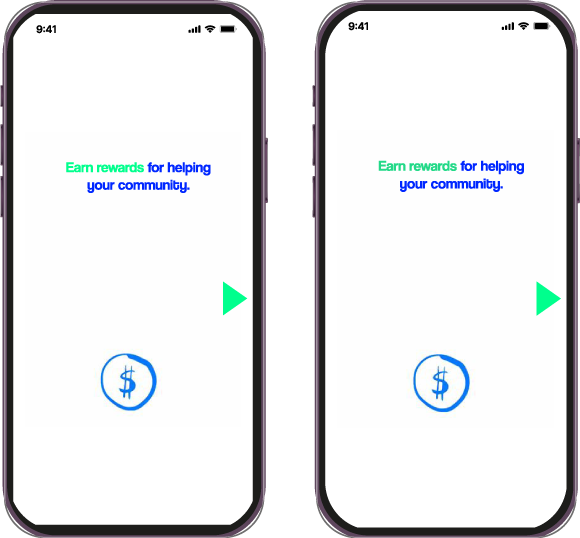
Contrast to enhance readability.
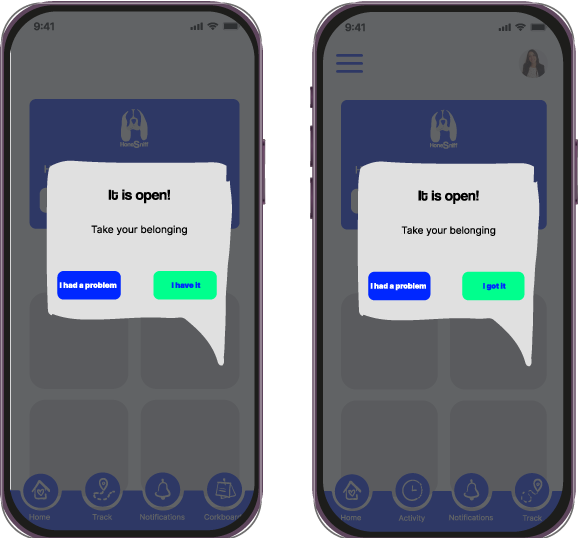
Use more precise terms.
Out
comes
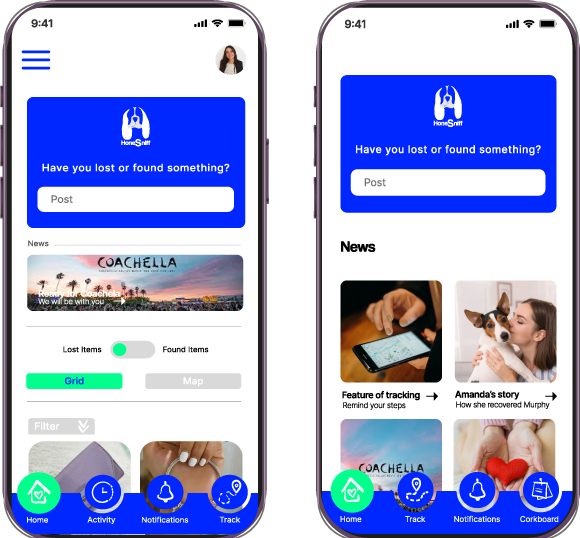
1. Complement with additional animations.
2. Retain key features in the menu.

Update the home screen with features that add value and are relevant to users’ goals: posting and searching.
The main takeaways of the project was to keep it simple, using classic elements to create familiarity and ease, which enhances intuitive use. Over 140 screens were developed and tested with real users in a controlled setting, resulting in no major changes needed. The main challenges were related to animations, an aspect we wanted to include in the project, which was resolved by using specialized software like After Effects. For future projects, it’s recommended to invest more time in the prototyping and testing phases rather than in research and empathy, this will help for further mastery of the necessary tools and software.